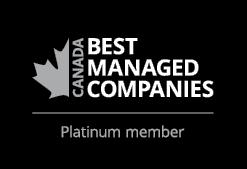Bringing your employees back to the office after more than two years of remote work may seem like a complex logistical hurdle. Prioritizing mental health will help your employees feel comfortable, supported, and welcomed in their post-pandemic workplace.
Whether your employees are returning to your physical office full-time or only occasionally, the ongoing changes in routine due to pandemic developments have been stressful for many. Even employees who are excited to return and socialize in person with their colleagues may find themselves feeling anxious or unsure of what to expect.
In this blog post, we will provide some tips for supporting your employees’ mental health and well-being during this period of transition.
Remove uncertainty through clear communication
Regardless of workforce size, your employees likely have differing levels of comfort and stress when congregating in the office—particularly since some of your employees may be unfamiliar with your office if they were onboarded virtually during the pandemic. Address potential discomfort or anxiety by making sure they have clear, accessible answers to the following questions before they come in:
- Do I need to sign in or be screened for COVID when I arrive?
- Do I need to take a rapid test?
- Do I need to be vaccinated?
- Do I need to wear a mask? Will others around me be wearing masks?
- Where is my workspace/desk? Where will I sit?
- Will my computer equipment work?
- Will sanitizing and cleaning protocols continue?
You may also wish to consider providing IT info sessions or days where your IT staff are fully available onsite to assist employees as they get their workstations set up. It can also be helpful to ensure your staff know who to contact if they experience any logistical barriers, such as building entry issues or uncertainty about meeting room locations, during their first days back.
Customized, flexible plans for today’s diverse workforce.
Allow a gradual transition
Significant changes in routine are more complicated when implemented suddenly. Even if you hope to have your employees in the office most of the time, it may ease the transition to bring them back gradually. Employers may wish to do this by:
- Holding an in-office staff meeting before requiring a consistent in-office presence to create an opportunity for employees to get reacquainted and reorient themselves to the office space
- Starting with a less frequent cadence of in-office work (for example, once a week) so that employees have more time to acclimatize to working in-office again
- Allowing employees to have input on the days of the week that they work in-office may make it easier for employees to work around caregiving arrangements and appointments
- Encourage employees to take work from home days if they need them to prevent them from becoming overwhelmed
Employers should also understand that shifting from remote to in-person work may temporarily decrease productivity as employees adjust to different routines, environments, and requirements. Extend compassion to your employees and encourage them to discuss any challenges or fears with you to know they’re supported.
Promote inclusivity and flexibility
To make sure that all employees feel welcomed regardless of their pandemic-related anxieties, it’s crucial to promote inclusivity and respect for all comfort levels with in-person work.
For example, employers may wish to consider implementing a “colour system” that employees can use at their workstations to signal their masking and social distancing preferences quickly. A “red” card displayed at an employee’s desk could indicate a preference for social distancing and masking, while “green” can signify that the employee is comfortable with closer proximity.
Managers and supervisors may also wish to lead by example by offering to put a mask on or keep their distance from employees, even if they are personally comfortable with fewer restrictions. This can help reassure employees that no matter their comfort level, they will not be judged by their leader or their team.
Seek employee input
As you navigate the best ways to return your employees to work in the office, whether in a fully in-person or hybrid onsite-remote model, it can be helpful to build employee input and feedback into your plans. Encouraging open communication about how employees are feeling and adjusting to the change can keep them engaged and invested in finding the best ways to ensure their new routine work for them. This can be done through regularly scheduled team or department check-ins, surveys, or informal conversations. Seeking employee feedback and acting on it, where possible, reassures them that their concerns are valued and provides a greater sense of control during this transition period.
Build community and make it fun
Throughout the pandemic, employees have been required to adjust to drastic changes in their working environment. Even though your employees have worked full-time in your office before, returning will still be challenging because they have worked hard to stay productive and adapt to the remote work environment. Employers should encourage their employees to use mental health support systems available to them, such as Employee and Family Assistance Programs (EFAP) if they’re struggling with the transition.
Leaders at all levels can also support the mental health of their employees by promoting community and teambuilding as appropriate, such as “welcome back” videos, company swag bags at employees’ workstations, employee appreciation events, or contests. If your workforce is hybrid, it’s crucial to make sure that your welcome initiatives are tailored for remote and in-person workers alike so that no one feels excluded.
Navigating your company’s next chapter
Whether your employees will be returning to the office every day, a few times a week, or only occasionally, the post-pandemic workplace provides a valuable opportunity to engage your employees in a meaningful way that shapes the future culture of your organization.





